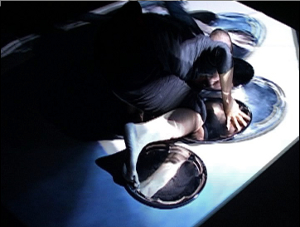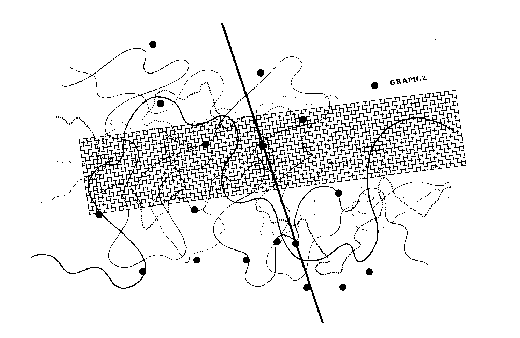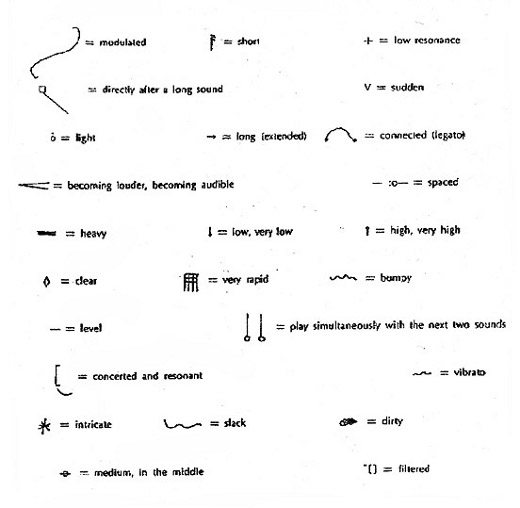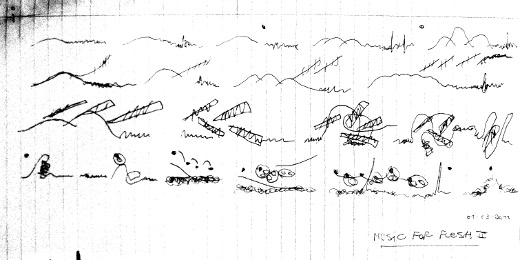Xth Sense > Performance Design
The 4th Pure Data Convention, Bauhaus Universitat, Weimar
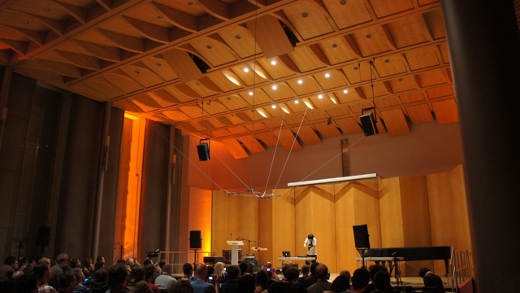
Chikashi Miyama | Black Vox
[The post has been UPDATED with a live recording of Music for Flesh II]
The Pure Data Convention is one of the best community led event I ever took part in. I’m not sure whether is the laid back attitude shared by the participants, or the excitement of showing and learning all the diverse things Pd can be used for, however the Pure Data meetings are something unique. The cloud of knowledge, techniques, good conversations and ideas that floats around the heads of the delegates is pretty special and cozy.
This year the fourth Pd Convention was organized by our friends and Pd developers Max Neupert and Bjorn Lindig, along with a team of colleagues from the Bauhaus Universitat in Weimar. I was honoured and thrilled to present the Xth Sense interactive system to the community, and eventually I had the chance to teach a workshop, give a lecture on the latest findings and perform the solo piece Music for Flesh II.
The workshop was quite fast, but we had the chance to get our hands dirty with some custom electronics and Pure Data programming for interactive, biophysical music; some pictures below.

The Xth Sense biophysical sensors
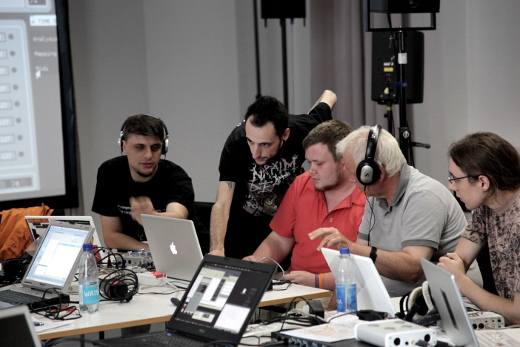
Designing sound gestures for the Xth Sense system
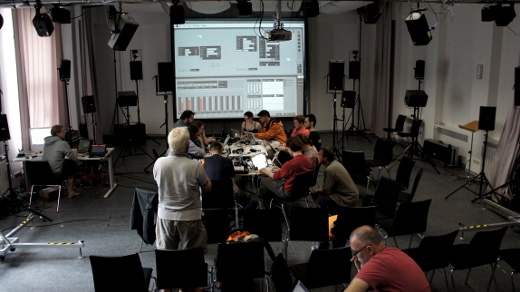
A ridiculous amount of speakers at the awesome Seam Studio.
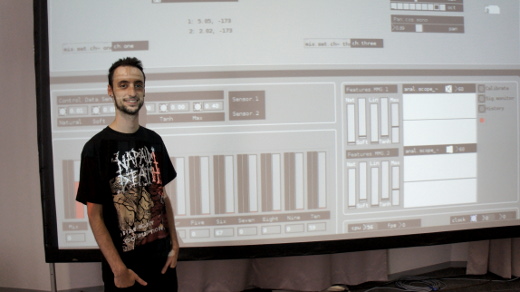
A nerd and its child.
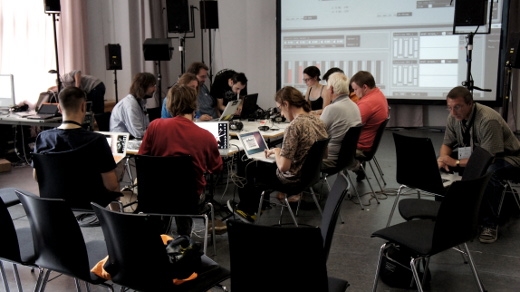
Full immersion, last hours of the course.
Personally it was a great experience as I collected some inspiring feedback and constructive critics about the whole XS project. Namely, I had wonderful conversations with friends Ricardo Palmieri and Richard Graham, that are both working on some highly recommended Pd-based projects. With Ricardo we have been considering a different standard for the production process of the XS sensors, while with Richard we discussed about the use of multiple subwoofers, the more effective impact of whole-body movements to both the sonic outcome and the audience perception, and the mediation between primal muscle sound and its computational mediation.
The latter topic is as tricky as stimulating; recently I’ve been thinking about this quite a lot, and if on one hand there is not an ultimate solution as we deal with the subjectivity of a musical aesthetic, on the other, this aspect of the research is crucial, for a deeper musical analysis could sharpen the timbrical characteristics of the XS as a musical instrument.
It is often very hard for me to be completely satisfied of a performance, but I can say the concert at the Seam Studio in Weimar was perhaps one of the best so far. Probably due to the swift anxiety of performing before the ears of my peers and colleagues, my concentration was fairly strong, and while playing I think I almost entered a trance. For the first time since March I spontaneously moved the whole body, rather than individual limbs; such a somatic behaviour triggered sound forms that I never heard before and playing the piece was far more enjoyable than usual. As simple as it gets, in contrast with single limbs contractions, whole body movements involve the excitation of a greater part of the body; thus many more oscillations are generated and the whole network of muscular tissues is excited. Sonically, this is translated in a faster dynamic and richer texture.
Here you can listen to a live recording of the piece.
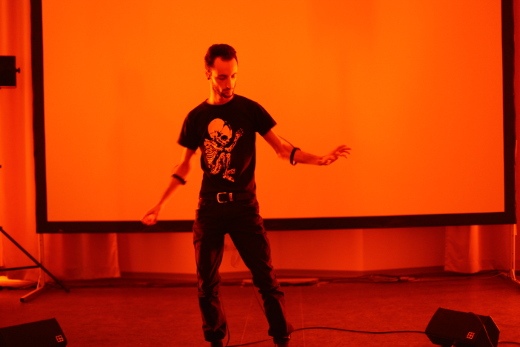
Marco Donnarumma | Music for Flesh II
The concerts program was excellent; the fourth PdCon gathered some of my favourite Pd musicians, such as Koray Tahiroğlu, Richard Graham, Chikashi Miyama (pictured at the top of the page), CHDH, Oscar Martin and Alexandre Porres. We also had an amazing exhibition, more workshops and a round table with a virtual Miller Puckette, who participated in streaming from the US. Check the program on-line to get a glimpse of the tight schedule.
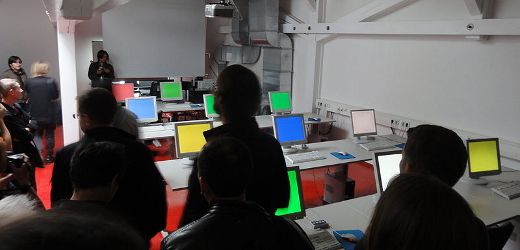
Giuliano Obici | Lanhouse Concert
Of course, I’m not forgetting about the papers; being that there were too many lectures, and the sessions were split in two rooms running at the same time I could not attend all of the presentations. However, it is hard to say which ones were the most interesting, because the diversity of the contents presented at the Convention is always so great to be almost overwhelming. If you wish to stay up to date with the latest developments of our community, you are only one click away.
A big thanks to the organization and to all the delegates that made this Convention another unforgettable one. A special thanks to Cyrille Henry, who provided us with some insights on the pmpd, a library for physical modelling and the use of shaders in GEM. Most likely I’ll be working with these tools soon for a new audiovisual performance.
All pictures are courtesy of the 4th PdCon.
Artistic residency Host Guest Ghost, National School of Theatre and Contemporary Dance, Copenhagen
In the end of May I’ve been invited to direct the second edition of Host Guest Ghost, an artistic residency in partnership with The Danish National School of Theatre and Contemporary Dance. The project was supported by The Danish Arts Council and Augustinus Fonden.
The project aimed to foster experimental approaches to dance, theatre and interactive technologies while forming emerging, talented choreographers and creatives. Together with a team of 6 dancers, 3 musicians and a professional chef, we developed a new intermedia piece titled “Raw/Roar”. The piece unveiled a peculiar, unique world of enhanced bodies, biophysical sound, augmented music and reactive videos. Among the different media and technologies explored during the residency, the main focus was set on the Xth Sense.
It was a challenging experience; initially, the dancers found some difficulties to combine their practice with the interactive framework provided by the Xth Sense, but after enough practice and open discussions about the motivation and aesthetic of the system, we defined a common terrain. However, it has been inspiring to realize how differently a musician and a traditionally trained dancer can approach the model of biophysical music. It is perhaps purely logical; whereas the former explores movement as a means towards a transparent externalization of a sound form, the latter is submerged in such a physical self-awareness that the idea of an incarnation through her body of a projected sound can be constraining.
I believe such idea is worth a further analysis on the nature and extendability of the Xth Sense; I would love to collaborate again with dancers to gain more insights about movement, music and performance.
As soon as the documentation will be ready I will post some pictures and videos.
New piece: Music for Flesh II
I just completed a new composition titled Music for Flesh II.
The control and aural vocabulary are far more complex than the earlier studio presentation; I also tried to enrich the sound spectrum of the Xth Sense exploring dynamic textures utilizing a wider frequency range. However, the most relevant advance was the implementation of two sensors simultaneously. The signal I receive from both sensors can be easily processed as a sound signal (sonic raw material) and/or control data.
I think the video below can well describe the current state of the reseach. The concert was recorded live at ACE, The University of Edinburgh on 1st March 2011. Thanks to Kevin Hay and Brendan F. Doyle for the sound engineering and light design.
Experimenting with a graphical score for Xth Sense based pieces
While composing Music for Flesh II, the new piece for the Xth Sense, I found difficult to draw the structure of the performance as the overall live act is mostly an improvisation based on a given set of sound-gestures and a fixed timeline. I define as a sound-gesture a given movement of the performer which can produce one and only sound form; this paradigm implies that the reactive computing system interprets each effective gesture according to a given, but still variable, array of sound behaviours, or sound scenes. The several sound-gestures which compose the piece are still experimental and most of them still have to be defined more precisely.
Being that the design of the performance is only based on this idea of sound-gesture, the use of a graphical score seemed to me the best way to go.
Graphical notation is fairly widespread today; since its first appearance in the 1950’s several experimental and avant-garde composers deployed graphical scores to better understand and describe a sound form, among them John Cage, Christian Wolff, Morton Feldman, Karlheinz Stockhausen, Iannis Xenakis and Anthony Braxton.
I’ve been reviewing different approaches to graphical scores, and although there exist digital systems which enable a composer to virtually draw experimental scores, I was still too fascinated by the act of drawing with a pencil on a piece of paper.
Thus, I started with simple exercises, such as drawing a graphical notation of few pieces which had inspired my composition. After some interesting results with Wind Chimes by Denis Smalley, I could draw a first draft of my own piece.
The symbols can be interpreted as an idiosyncratic representation of both the sounds and the kinetic movements to be executed by the performer.
This was my first attempt to draw a graphical score for a piece based on the Xth Sense; I will keep experimenting with this aspect of composition as the paradigm represented by the “sound-gesture”, which is integral to the Xth Sense technology, offers interesting prospects for experimental notation.
Brief notes on the first public performance for augmented muscle sounds

Setting up for the performance | Suoni Sonori, Milan, Italy, January 2011 | Courtesy Ugo Dalla Porta
Here are some critical keypoints which arised from a joint analysis by my supervisor – Martin Parker – and myself regarding the first public performance of Music for Flesh I:
- to design intimacy;
- to create physical spaces with broader body movements;
- to change gesture patterns according to sound patterns;
- to reach a broader frequency spectrum, thus more interestingly exciting viewers’ listening;
- to not let die a single sound scene, but bring it somewhere, build more complex structures around it;
- to be able to switch in real time between different MMG signal functionalities (sonic source or control signal), while keeping safe the possibility to deploy both function of the signal at the same time.
Overall, what I need to focus the performance design on is a richness of color and a sofistication of form.
I look forward to using two sensors on both arms, as this could significantly enhance the richness of the sonic material, while providing the possibility of polyphonic structures.
On another hand, more exciting sonic forms may also be achieved by means of autonomous processes capable of reacting to the performer’s kinetic behaviour, adding machine state-dependent pattern changes, as also suggested by my friend Jaime Oliver during our last email exchange.
Studio demo presentation of Music for Flesh I
Here’s a first demo presentation of Music for Flesh I, a solo sonic piece for the Xth Sense biosensing wearable device.
This piece is the first milestone of the research, many aspects need to be improved, but I’m quite satisfied of this result and above all composing this piece provided many insights about the further development of the research.
Further information here.
Music for Flesh I – solo piece for Xth Sense biosensing wearable device from Marco Donnarumma aka TheSAD on Vimeo.
Recorded in January 2011 at Suonisonori, Milan, Italy.
Camera and editing Gianluca Messina; audio recording Giuseppe Vaciago.

